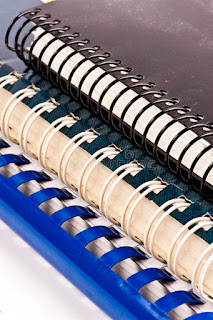INTRODUCTION & TABLE OF CONTENTS
TABLE
OF CONTENTS
1. The front matter of your thesis
2.
Title page
3.
Acknowledgements
4.
Abstract
5.
Table of contents
6.
List of figures and tables
7.
List of abbreviations
8.
Glossary
9.
Introduction
10. Literature review / Theoretical framework
11. Methodology
12. Results
13. Discussion
14. Conclusion
15. Reference list
16. Appendices
17. Editing and proofreading
18. Checklist
By Thesis Doctor
Follow Us on: Website Facebook Page Instagram YouTube Channel
Contact Us: Skype call or Chat WhatsApp BisApt
1. The Front Matter of your thesis
Not all dissertations are structured exactly
the same – the form your research takes will depend on your location,
discipline, topic and approach. For example, dissertations in the humanities
are often structured more like a long essay, building an overall argument
to support a central thesis, with
chapters organized around different themes or case studies. However, if you’re
doing empirical research in the sciences or social sciences, your dissertation
should generally contain all of the following elements. In many cases, each
will be a separate chapter, but sometimes you might combine them. For example,
in certain kinds of qualitative social science, the results and discussion will
be woven together rather than separated.
The order of sections can also vary between
fields and countries. For example, some universities advise that the conclusion
should come before the discussion. If in doubt about how your thesis or
dissertation should be structured, always check your department’s guidelines
and consult with your supervisor.
2. Title page
The very first page of your document contains
your dissertation’s title, your name, department, institution, degree program,
and submission date. Sometimes it also includes your student number, your
supervisor’s name, and the university’s logo. Many programs have strict
requirements for formatting the dissertation title page.
Receive feedback on language, structure and
formatting
Professional editors proofread and edit your
paper by focusing on:
- Academic style
- Vague sentences
- Grammar
- Style consistency
3. Acknowledgements
The Acknowledgements section is usually optional, and gives
space for you to thank everyone who helped you in writing your dissertation.
This might include your supervisors, participants in your research, and friends
or family who supported you.
4. Abstract
The abstract is a short summary of your
dissertation, usually about 150–300 words long. You should write it at the very
end, when you’ve completed the rest of the dissertation. In the abstract, make
sure to:
- State the main topic and aims of your research
- Describe the methods you used
- Summarize the main results
- State your conclusions
Although the abstract is very short, it is the first part (and sometimes the only part) of your dissertation that people will read, so it is important that you get it right. If you are struggling to write a strong abstract, contact us: Skype Call or Chat WhatsApp
5. Table of contents
In the table of contents, list all of your
chapters and subheadings and their page numbers. The dissertation contents page gives the reader an overview of your
structure and helps easily navigate the document. All parts of your
dissertation should be included in the table of contents, including the
appendices. You can generate a table of contents automatically in Word if you
used heading styles.
6. List of figures and tables
If you have used a lot of tables and figures
in your dissertation, you should itemize them in a numbered list. You can automatically generate this list
using the Insert Caption feature in Word.
7. List of abbreviations
If you have used many abbreviations in your
dissertation, you can include them in an alphabetized
list of abbreviations so that the reader can easily look up their
meanings.
7. Glossary
If you have used many highly specialized
terms that will not be familiar to your reader, it might be a good idea to
include a glossary. List
the terms alphabetically and explain each term with a brief description or
definition.
Other related topics
1. Experimental Design- are you asking the right questions
2. Common Mistakes Non-Native English Speakers Make – Part 1: Spelling and punctuation
3. The 7 common mistakes first time publishers make
5. What would a PhD graduate advise a new PhD student?
By Thesis Doctor
Follow Us on: Website Facebook Page Instagram YouTube Channel
Contact Us: Skype call or Chat WhatsApp BisApt







No comments:
Post a Comment